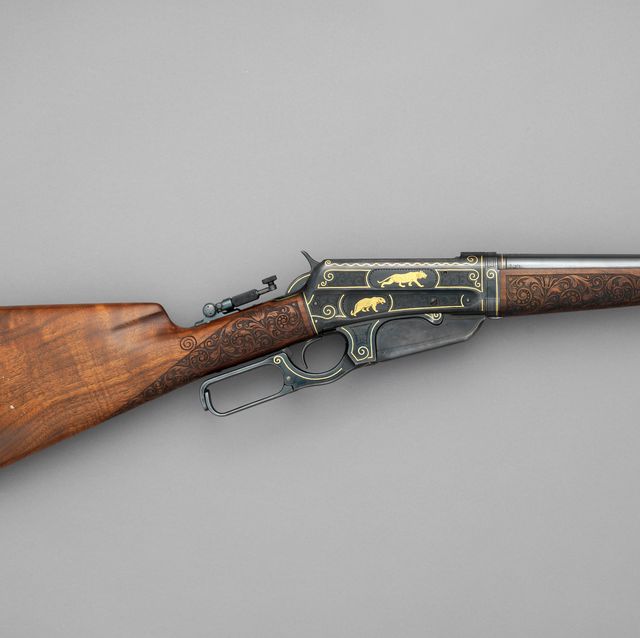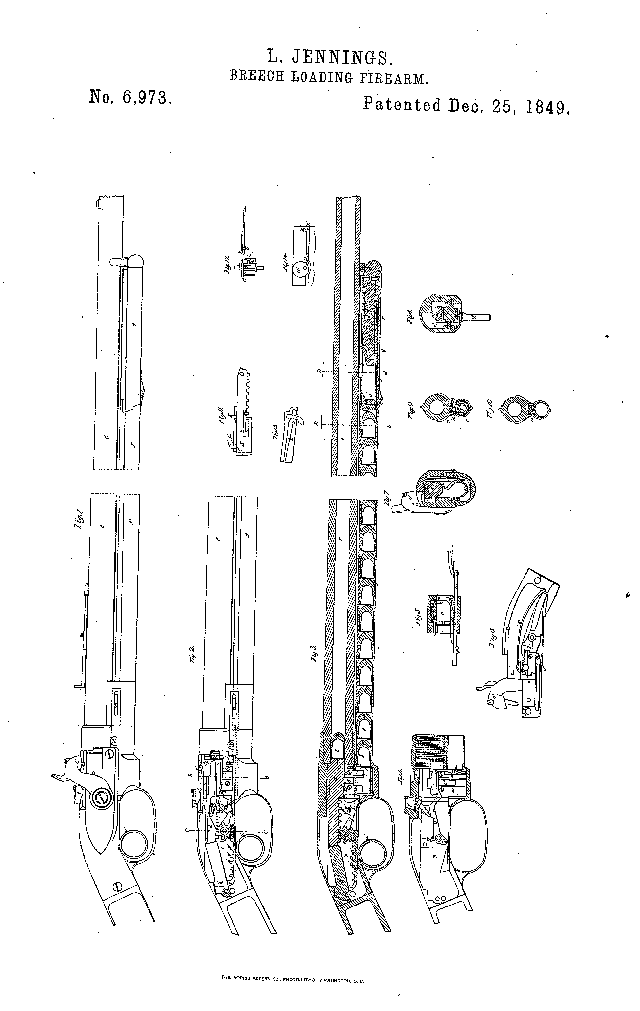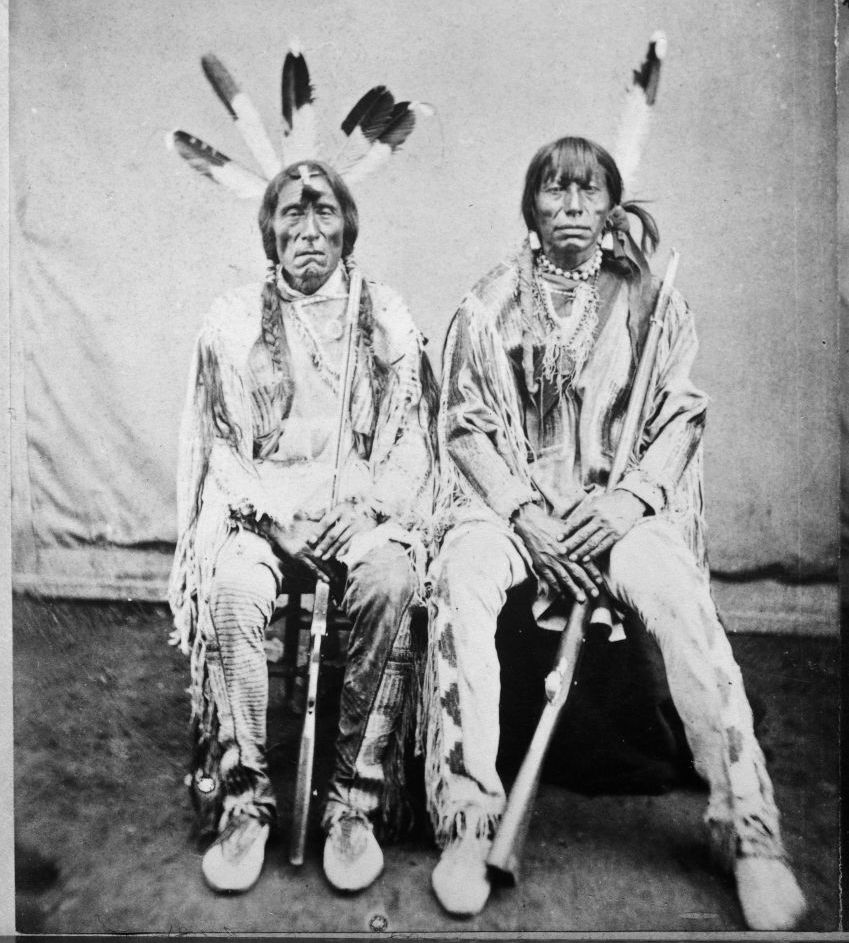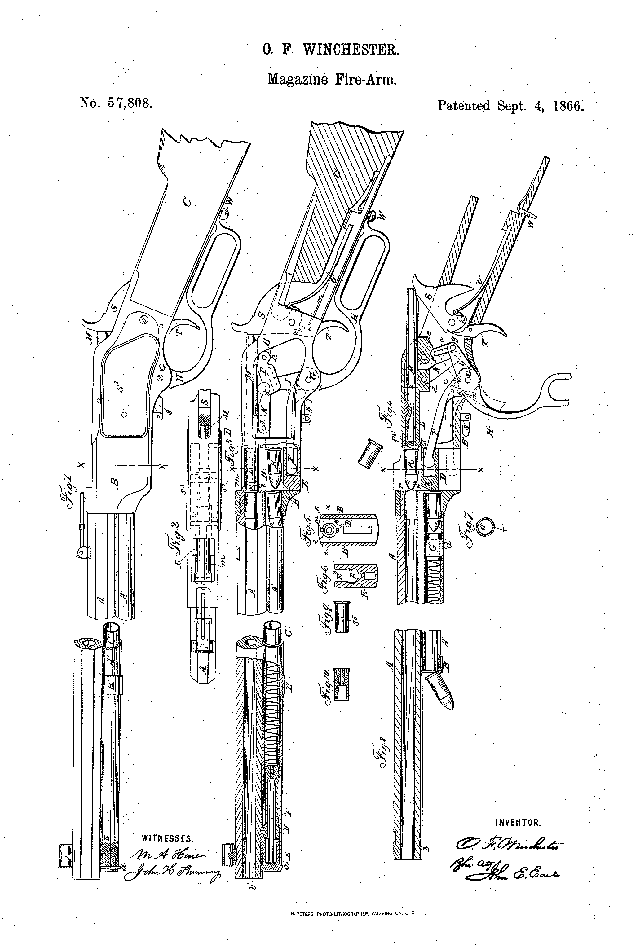The Winchester rifle was hailed by its manufacturer as “the gun that won the West.” But there’s a lot more to the story than that. The rifle that became the Winchester had a long, tortuous development that involved some of the era’s most influential businessmen and inventors. Its famed lever action fought the American Civil War and many other battles long before the Winchester became a favorite of the likes of Buffalo Bill, sharpshooter Annie Oakley, and even President Teddy Roosevelt.
📖 You love badass history. So do we. Join the squad at Pop Mech Pro.
The Winchester’s Ancestors
The Winchester rifle’s technological family tree runs through the Henry rifle, used during the Civil War, and on back to 1849, when inventor Walter Hunt patented the Volition Repeating Rifle. Hunt’s rifle incorporated the two key features that would define the Winchester: a tube magazine under the barrel and a lever action that loaded rounds into the chamber. Hunt’s original Volition Rifle was ingenious but cumbersome, so he sold the design to a businessman who hired gunsmith Lewis Jennings to improve it. Jennings patented numerous improvements and sold thousands of rifles by 1851. His gun could hold an impressive 24 rounds, though these were small and underpowered.
Both rifles used an ingenious form of ammunition called the Volition or rocket ball, which had a propellant charge in its base. These new bullets were fed from a tube magazine under the barrel. Like most rifles of the period, Hunt’s and Jenning’s guns needed percussion caps to ignite the ammunition. But here the Jennings rifle took a leap forward. He had a magazine of caps built into its receiver, and as the weapons action cycled, a round loaded into the chamber and a percussion cap went into position automatically. Only when the trigger ring was pulled fully would the rifle fire. Loading, priming, and firing were accomplished with just one trigger pull—a revolutionary improvement over earlier rifles.
Even so, the gun didn’t sell, in part because it was underpowered and expensive to manufacture. But two new investors you may have heard of, Horace Smith and Daniel Wesson, saw promise in the rifle and formed the Volcanic Repeating Arms Company in 1854. This time the rifle took on the iconic appearance of the Winchester, dispensing with the Jennings’ trigger ring and introducing the instantly recognizable lever.
The Volcanic was offered as both a pistol and a rifle and enjoyed some limited commercial success. But the Volcanic’s rocket ball, which evolved from Hunt’s initial ammunition, proved to be the gun’s Achilles heel, undermining the Volcanic rifle’s promising design. Smith & Wesson would sell off the company in 1855 to a group led by Oliver Winchester before going on to found the legendary revolver company that endures today.
The Blue and the Gray
In 1857, Winchester renamed his new firm the New Haven Arms Company and hired Benjamin Tyler Henry as factory foreman. Henry abandoned the rocket ball ammunition and converted the rifle to fire the more powerful and more reliable .44 caliber rimfire ammo. Henry won a patent for his improvements in October 1860. It was the war to follow that sealed his gun’s reputation.
Troops on both sides of the American Civil War prized the Henry rifle. While it was predominantly Union soldiers who carried the Henry, Confederate President Jefferson Davis armed his bodyguards with captured Henry repeating rifles. The Henry was an expensive weapon, costing $52.50 in the dollars of that day, yet as many as 9,000 rifles were privately purchased. The Union Army officially purchased 1,731 Henry Rifles at $36.95 a piece. Now, this was a tiny number in comparison to the 94,196 Spencer repeaters that the Union bought, but the Henry with its 16-round tubular magazine gained a reputation for firepower. Confederates allegedly declared it “that damn Yankee rifle you can load on Sunday and shoot all week.”
In 1865, the Henry rifle played a pivotal role at the Battle of Allatoona Pass when an outnumbered and surrounded Union force beat back Confederate attacks. During one of these skirmishes, one company of the 7th Illinois, made up of just 52 men, crushed an attacking Confederate battalion.
After the war, the Henry rifle headed to the Western Frontier. Infamously, the alliance of Lakota, Dakota, Northern Cheyenne, and Arapaho under Crazy Horse defeated elements of Colonel Custer’s 7th Cavalry at the Battle of the Little Bighorn using Henry Rifles and Winchester Model 1866s. Archaeological evidence shows that the Native Americans were armed with as many as 150 or more repeating rifles, which greatly outmatched the single-shot carbines carried by Custer’s men.
The Glory Years
The Model 1866 came about after Oliver Winchester once more renamed his company, this time after himself. The Winchester Repeating Arms Company’s Model 1866 was a refinement of the Henry rifle that used a new loading gate in the receiver and a wooden hand guard. No longer would the rifle have to be loaded under the muzzle. Plus, the rifleman’s hand was now protected from the heat generated in the barrel.
Seven years later, Winchester unveiled Model 1873 that used the same basic toggle-link action as the Henry but was chambered in new center-fire ammunition. It proved to be a huge commercial success. Winchester continued manufacturing it until 1919.
The Winchester rifle’s next big jump came in 1886. Up until then, all Winchesters used a toggle-link action. This means that when the lever is pushed forward, this breaks the toggle and slides the breech block out of battery, extracting the spent case. As the lever continues forward, a new cartridge is lifted into the action. Finally, returning the lever to its original position slides the breech block forward. This chambers the round and cams the toggle joint into the locked position.
This design endured for decades. But as the 19th century came to a close and ammunition became increasingly powerful, Winchester’s iconic 1873 lever-action rifle could not withstand the high pressures. That’s when John Moses Browning, America’s greatest gun designer, entered the Winchester’s story. In 1885, Browning was asked if he could design a stronger action that could fire big game hunting ammunition such as the buffalo-stopping .50-110 Winchester cartridge. He designed the Model 1886, which introduced a stronger, vertically sliding, locking-block action to replace the weaker toggle lock.
Six years later Winchester launched the Model 1892, which was slightly smaller but still used the same tough action. It became an instant hit with over one million made. In total, more than eight million of Browning’s lever-action 1886, 1892, and 1894 rifles were made.
Winchester Around the World
While the U.S. military never formally adopted the Winchester, a number of other countries did. The Ottoman Army used the repeaters to great effect against the Russians during the Russo-Turkish War (1877–78). In 1915, the military lever-action had one last hurrah when Winchester sold 300,000 rifles to Imperial Russia, which used them on the Eastern Front against the Germans. Unlike their tube-magazine predecessors, these Model 1895s had a more practical box magazine.
Along with the Colt Single Action Army, the Winchester is one of the iconic weapons of 19th century America. It represents the young nation’s burgeoning industrial might and its unstoppable march Westwards. Its firepower was unmatched in its day. Like other Western guns, the Winchester grabbed the public’s imagination in films like Winchester '73 starring Jimmy Stewart, or Stagecoach and True Grit starring John Wayne, to name a few.
Today, Winchester remains a household name, and lever-action guns continue to be popular sporting and hunting rifles, with thousands made every year.




















